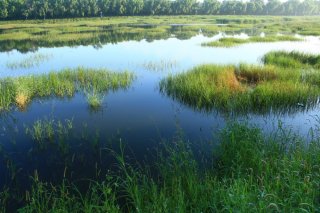Harmful Algal Blooms, Hypoxia, and Nutrients Research Webinar Series

About the Webinar Series
Hosted by EPA's Office of Research and Development, Office of Water, and regional offices, this free webinar series is focused on communicating the latest, cutting-edge research related to nutrients and the priority impacts of nutrient pollution: harmful algal blooms (HABs) and hypoxia.
Topics will include regional priorities; regulatory updates; and cutting-edge EPA research related to monitoring and forecasting, prevention, control, and response.
Webinars are typically held bimonthly from 2 to 3 p.m. ET on the last Wednesday of the month.
Upcoming webinar dates and topics are subject to change. Additional information and registration will be posted closer to the scheduled date and as they become available.
Past Webinar Recordings
Links to closed-captioned recordings of past webinars hosted on EPA's YouTube channel are available below. Certificates cannot be provided for watching the webinar recordings.

